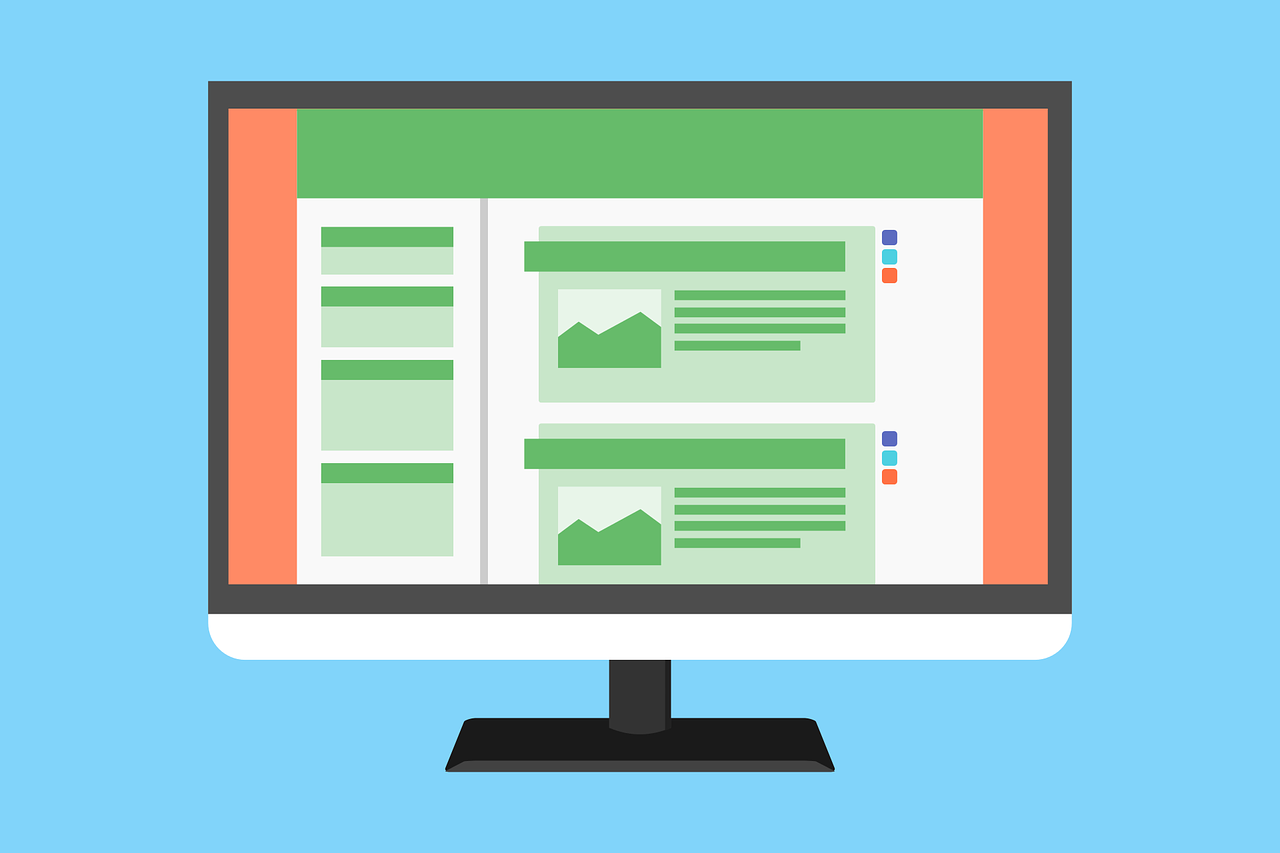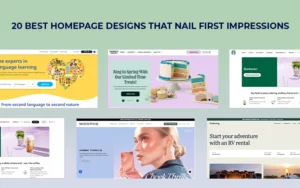We are at a time when success at the business has transcended the phase of just having a massive office building. Possessing a strong online presence is essential for survival in the business world at such a time as this. Although a combination of several things is essential to owning a flourishing business, our focus will be on the elements of a great website and what makes them stand out.
Gone are the days when having a website with a simple business description and few images could cut it. In this era of internet business, a website needs much more for it to be called great, and below are the elements of a great website required to make that possible.
Let’s get right to it and discover the elements of a great website!
Table of contents
- 1. Components of a good website : Make it visually appealing
- 2. Essential elements of a good website : The Home Page
- 3. A Clear-cut and Visible Call-to-Action is Crucial
- 4. Key elements of a good website : Simple and Easy Navigation
- 5. Strong CMS and Back-end Infrastructure
- 6. An ‘About Us’ Page That Isn’t Boring Goes A Long Way
- 7. Elements of good web design : Contact Information
- 8. Elements Of A Great Website That Is Mobile Friendly
- 9. Testimonials Could Help Build Your Credibility
1. Components of a good website: Make it visually appealing
We live in a visual world, so, an attractive and appealing website is a crucial element of a great website. For the visuals of a website, there can never be too much space. When it comes to designing a website, space is crucial. It dictates everything about your site, from the flow to readability. Proper spacing not only helps a website look appealing and less clumsy, it can also be used to create a focal point for users.
Also, never be afraid to go the extra mile when it comes to the quality of your images and graphic designs. Create stunning visuals that draw users in, this reflects your brand well and traps your visitors. Rather than rely on stock images, hire a photographer or illustrator to create images to portray what you have to offer.
Also read: Creating A Separate Mobile Site Vs A Responsive One
2. Essential elements of a good website : The Home Page

Do you know it takes about 0.05 seconds for users to form an opinion about your website that determines if they’ll stay or leave? Although we’re told to ‘judge a book by its cover’, this rule doesn’t apply to websites, as they are subject to impulsive judgments. A great website should have the ability to impress a visitor within the first 5–10 seconds he/she visits your site.
The homepage of your site is your chance to turn a one-time visitor into a potential lead if properly harnessed. Not only should the homepage be appealing, it should also have a clear message about the goods or services offered. How well-crafted the homepage of your site determines the traffic generated by your website, aside the added advantage of traffic boosters services.
Check out this blog to learn about best practices for website design.
3. A Clear-cut and Visible Call-to-Action is Crucial

After the homepage has convinced a one-time visitor to be a probable lead, a functional website connects further with its users with a loud and clear CTA. A website acts as a gateway to perform an action—buy a product, subscribe to a newsletter, etc. The only way to ensure a user follows through with such actions is to make your CTA bold!
Design your site’s CTA in a way that convinces and guides users to take immediate action, thus converting them to potential clients. Call-to-actions should be made obvious and placed in a highly visible part of the page. The right colors, contrast, font, and design of your CTA might just be what make you bag that next client.
Also read: How To Create a Good User Interface: Essential Tips for UI Designers
4. Key elements of a good website: Simple and Easy Navigation

Navigating through your website should not be complex for users. Navigation is the ‘GPS’ of your website and it should be easy to use and not overwhelming. A navigation menu should have around 5–10 categories on display and should be consistent on every page of the site.
The easier it is for users to navigate through your site, the longer they are likely to interact and stay on the page. For example, sites with parallax scrolling often include directional arrows that make the platform more user-friendly. Using appealing and attractive templates and themes when designing your navigation tools also helps site users sift through a website better.
5. Strong CMS and Back-end Infrastructure

A Content Management System (CMS) provides the ability to control and manage the content of a website in the absence of technical training. The usability of a site is embedded in the CMS, and it depends on the ability of the website to update content and interact effectively with its users. This is particularly true for e-commerce websites.
The platform upon which you build your website determines its usability. It also determines how easy updating its content and interacting with visitors is. When selecting a CMS for your site, here are few things to consider;
- SEO friendly CMS
- Simple content editing from any device at any time
- Fast loading space
- Secure enough to prevent hacking attempts.
6. An ‘About Us’ Page That Isn’t Boring Goes A Long Way

An About Us page is your opportunity to give your site visitors a little bit of extra information about your company that they wouldn’t find anywhere else. It helps a company give their visitors insight on how far they’ve come along and their different accomplishments.
Remember to keep this part of your website concise, informative, and up-to-date.
Also read: How User Experience Plays A Significant Role In Premium Websites
7. Elements of good web design : Contact Information

Your homepage might have been able to make a first-time visitor make that split-second decision to stay on your website. Your CTA might have gone the extra mile to turn them into potential clients, but all that progress could be lost if the right contact information is absent.
The contact information should be easily seen and should stand out. The contact page usually appears on the header or footer of the homepage. You could also have a dedicated page that might feature a form. Whatever you do, your contact information page is of utmost importance when it comes to bagging a client.
Also read: Must-Have Elements of a Complete Ecommerce Product Page
8. Elements Of A Great Website That Is Mobile Friendly

85% of adults believe that a company’s website, when viewed on a mobile device, should be as good or better than its desktop website. Nowadays, people receive information on the go on their mobile devices and tablets, therefore, a mobile-optimized website is a necessity to stay ahead of the game.
A responsive web design is the best solution to achieving a mobile-friendly website. This is because it displays web content efficiently, regardless of the kind of device it’s opened on.
Check Out: The Ultimate 12-Point Responsive Website Design Checklist For Websites
9. Testimonials Could Help Build Your Credibility

Nothing sells a product or service like word of mouth, and the best way to go about it in this internet era is to include testimonials on your website. Personalized testimonials from satisfied customers should be included on your website to prove that your goods or services work.
Although a lot of elements are needed in creating an excellent website, it would do you well to take into consideration the above-listed keys when developing your business website. A website is the front door of your business, through which people all over the world have access to your products or services. Give it your best shot!
Like this post? Check out more amazing web design content here.





